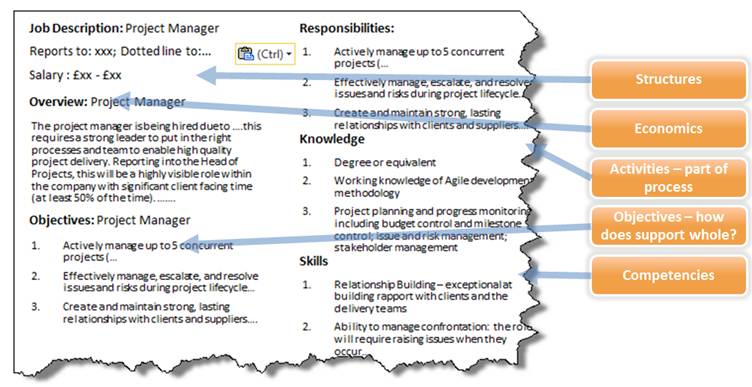Role descriptions: collecting dust because they are irrelevant
Blog by Rupert Morrison on how in an era of constant change the old-fashioned Job Description or Role Description is redundant.
When recruiting for a role, typically a job description or specification (job spec) is developed. Once the role is filled, the job spec is put in a drawer to gather dust. All too often, they are developed because someone insisted you cannot recruit without one so you find an existing one and mostly add to it, re-using much of the existing content. The elements included within a job spec are exactly those included within the micro design process we advocate in organizational design. In fact, the micro design is each of the elements of a job spec pulled together into a single document.
- There’s the reporting line and often the economics (how many people)
- Activities and who is responsible for what?
- Objectives of the role
- Competencies and skills required
When discussing role development with a group of MBA students (as part of organizational design training), one of them commented that the company he worked for recently ran a process to understand what everyone did within the sales department. It transpired that a large number of the activities were not captured in any job specs and added up equivalent to 15% of the entire workforce. This is not uncommon, as evidenced by any number of individual activity analyses (IAA) we have conducted. What’s concerning is being clear about what should people be doing and what is not being done. If a pay and grade review is done, how do you even start to think through the various roles in this context?
In designing roles, one shouldn’t just think about the role, but also how each role interfaces with other roles in order to get things done. It’s equally critical to ensure the 3 criteria for employee motivation as developed by Daniel Pink are met, namely:
- Purpose
- Autonomy
- Mastery
As the organization evolves, do the roles evolve? Do you want to understand this and plan for it, or just let it happen? Meaningful role design should be part and parcel with meaningful micro design. It requires thought. But the benefit of getting it right is a more aligned, fit-for-purpose organization.
